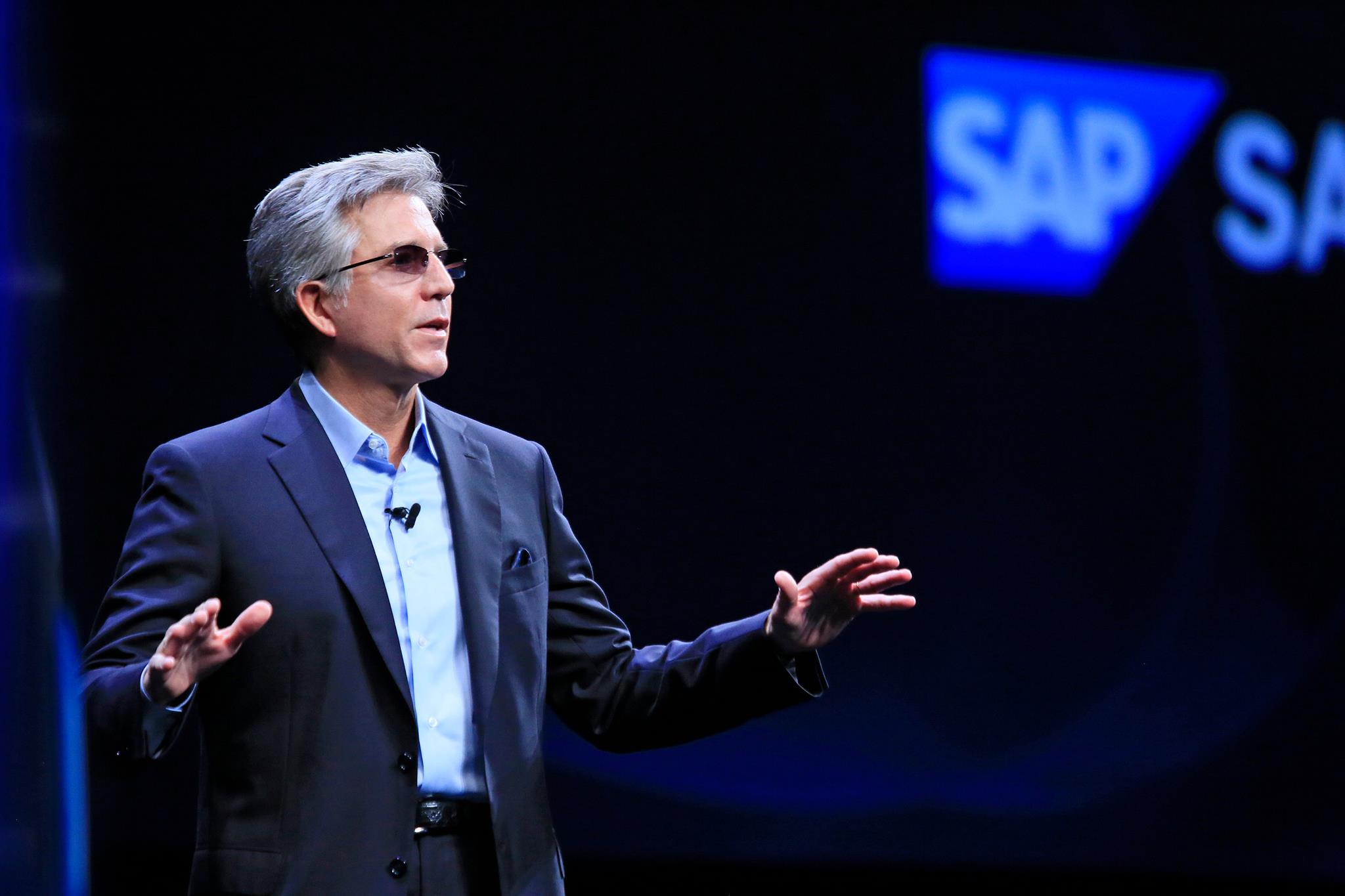 CLOUD
CLOUD
 CLOUD
CLOUD
 CLOUD
CLOUD
SAP SE missed estimates on both profit and revenue in its fiscal second quarter, sending its stock down nearly 5% in early trading, but the company blamed the shortfalls on uncertainty caused by trade tensions with China and said it’s on track to meet its forecasts for the full year.
Revenue rose 11% year-over-year, to $6.66 billion, but that was below analysts’ consensus estimates of $6.71 billion. Earnings per share of $1.09 slightly missed consensus estimates of $1.11.
The company reiterated its full-year forecast of revenues in the range of $22.4 billion to $22.7 billion, which would be up about 10% on a constant-currency basis. Executives said the company is also on track to achieve its goal of a 1% annual increase in gross margins through 2023.
“We feel strongly about our top line and increasingly confident about our bottom line,” Chief Executive Bill McDermott (pictured) said on a call with analysts.
Cloud revenue rose 40%, down from the 48% growth reported in the previous quarter. SAP has recently moved to partner more closely with cloud infrastructure providers with the goal of using their platforms as a springboard to sell other products in its portfolio to their customers. “As a result, some of our contract revenues moved to the partners, but this will pay off in the long run,” McDermott said.
The CEO was particularly bullish on the growth potential of its Qualtrics International Inc. subsidiary, which SAP acquired early this year for $8 billion. Qualtrics sells “experience management” software that asks employees about their buying experience to enable vendors to better understand their behavior.
Although the company didn’t break out Qualtrics’ revenue specifically, McDermott called it “the growth driver we expected and more. Experience management has succeeded digital transformation as the priority of CEOs around the world,” he said.
The immediate selloff in SAP shares is probably a slight overreaction to changes in SAP’s business that will benefit the company in the long run, said George Lawrie, vice president and principal analyst at Forrester Research Inc.
“Margin tends to be lower on [software-as-a-service] than perpetual licenses and the mix of business might explain part of the decline in earnings per share,” he said, noting that software license revenues declined 6% in the quarter on a constant currency basis. “Usually, markets value the annuity revenue of cloud and SaaS more highly than one-off perpetual license sales,” he noted.
That bodes well for SAP in the long term. Predictable revenue reached 69% in the second quarter, up 3% over last year although down slightly from the 72% reported last quarter.
SAP’s stock was up more than 35% this year before today’s earnings announcement, making it difficult for the company to surprise on the upside. Today’s sell-off is “general sentiment and market jitters, especially given concerns over earnings this quarter,” said David Vellante, chief analyst at SiliconANGLE sister company Wikibon.
The company added 600 customers of its S/4HANA business management software suite to reach 11,500 customers, up 29% year-over-year, a figure that Lawrie described as “encouraging progress.” Half of those customers were new to SAP.
SAP is walking a fine line between positioning its business for growth while achieving the margin improvements it staked out last quarter when McDermott said the company would put profit margins ahead of growth for the next several years.
The CEO appeared to hedge those comments on the call with analysts, declaring that “SAP is a growth company and we’re going to remain a growth company.” Profitability improvements will be achieved through operational efficiencies such as the recent relocation of one European service office to a lower-cost location in the Philippines, said Chief Financial Officer Luka Mucic.
Executives also said the company is making headway in improving gross margins on its cloud computing business, which were at 62.6% in the quarter, up from 58.3% a year ago. Noting that new cloud bookings were up 17% but overall cloud revenue grew 40%, Lawrie said “That points to a growing footprint in existing clients and perhaps also to less discounting to win the deal.”
Executives positioned the just-concluded quarter as an anomaly owing in part to delayed contract closings in China and the impact of stronger-than-expected uptake on a voluntary workforce reduction announced early this year. Operating cash flow dropped 10%, to just over $3 billion, and operating expenses jumped 17% based on Europe’s International Financial Reporting Standards rules.
Executives have emphasized that the cost reductions are being carried out from a position of strength with the objective of balancing SAP is a skills inventory with the needs of the market. “We will not be hiring people who don’t develop software at SAP,” McDermott said. “We will manage hiring with an iron fist.”
Customers and investors need to be patient while the transition plays out, said Holger Mueller, principal analyst at Constellation Research Inc. “SAP is in deep product transformation and executives are just starting to reshape their organizations,” he said. “It will take some time for SAP to deliver.”
Despite the quarterly earning blip, McDermott sounded almost defiant in reassuring analysts that the business is on track. “The bookings scenario in the company is ever strong and the pipelines are commensurate with what we guided for,” he said. “Count on the cloud to come through in bookings and revenue in the back end of the year.”
THANK YOU